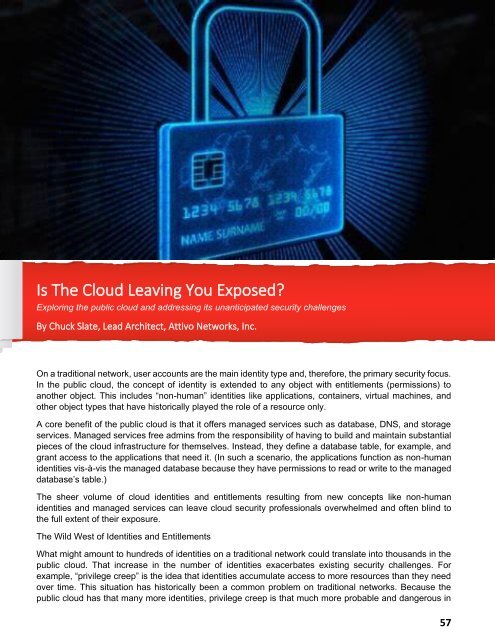The Black Unicorn Report for 2021
In this Black Unicorn Report for 2021, we’ve taken a few unique cybersecurity lenses to view the market and predict the future. Note that post COVID-19, the world has turned upside down and it’s accelerated telecommuting and cloud-based apps (SaaS) expansion, moving us from 3-4% home workforce to over 51% and growing. Thus, the major attack vectors have shifted to the cloud and weaker home-computing hygiene. This has opened doors for increased revenues and visibility among those players who secure the cloud, SaaS apps and deal with weak, remote, exposed endpoints. Learn about the winners and finalists in seven key categories and get one step ahead of the next threat with their help.
In this Black Unicorn Report for 2021, we’ve taken a few unique cybersecurity lenses to view the market and predict the future. Note that post COVID-19, the world has turned upside down and it’s accelerated telecommuting and cloud-based apps (SaaS) expansion, moving us from 3-4% home workforce to over 51% and growing. Thus, the major attack vectors have shifted to the cloud and weaker home-computing hygiene. This has opened doors for increased revenues and visibility among those players who secure the cloud, SaaS apps and deal with weak, remote, exposed endpoints. Learn about the winners and finalists in seven key categories and get one step ahead of the next threat with their help.
Create successful ePaper yourself
Turn your PDF publications into a flip-book with our unique Google optimized e-Paper software.
Is <strong>The</strong> Cloud Leaving You Exposed?<br />
Exploring the public cloud and addressing its unanticipated security challenges<br />
By Chuck Slate, Lead Architect, Attivo Networks, Inc.<br />
On a traditional network, user accounts are the main identity type and, there<strong>for</strong>e, the primary security focus.<br />
In the public cloud, the concept of identity is extended to any object with entitlements (permissions) to<br />
another object. This includes “non-human” identities like applications, containers, virtual machines, and<br />
other object types that have historically played the role of a resource only.<br />
A core benefit of the public cloud is that it offers managed services such as database, DNS, and storage<br />
services. Managed services free admins from the responsibility of having to build and maintain substantial<br />
pieces of the cloud infrastructure <strong>for</strong> themselves. Instead, they define a database table, <strong>for</strong> example, and<br />
grant access to the applications that need it. (In such a scenario, the applications function as non-human<br />
identities vis-à-vis the managed database because they have permissions to read or write to the managed<br />
database’s table.)<br />
<strong>The</strong> sheer volume of cloud identities and entitlements resulting from new concepts like non-human<br />
identities and managed services can leave cloud security professionals overwhelmed and often blind to<br />
the full extent of their exposure.<br />
<strong>The</strong> Wild West of Identities and Entitlements<br />
What might amount to hundreds of identities on a traditional network could translate into thousands in the<br />
public cloud. That increase in the number of identities exacerbates existing security challenges. For<br />
example, “privilege creep” is the idea that identities accumulate access to more resources than they need<br />
over time. This situation has historically been a common problem on traditional networks. Because the<br />
public cloud has that many more identities, privilege creep is that much more probable and dangerous in<br />
57


















